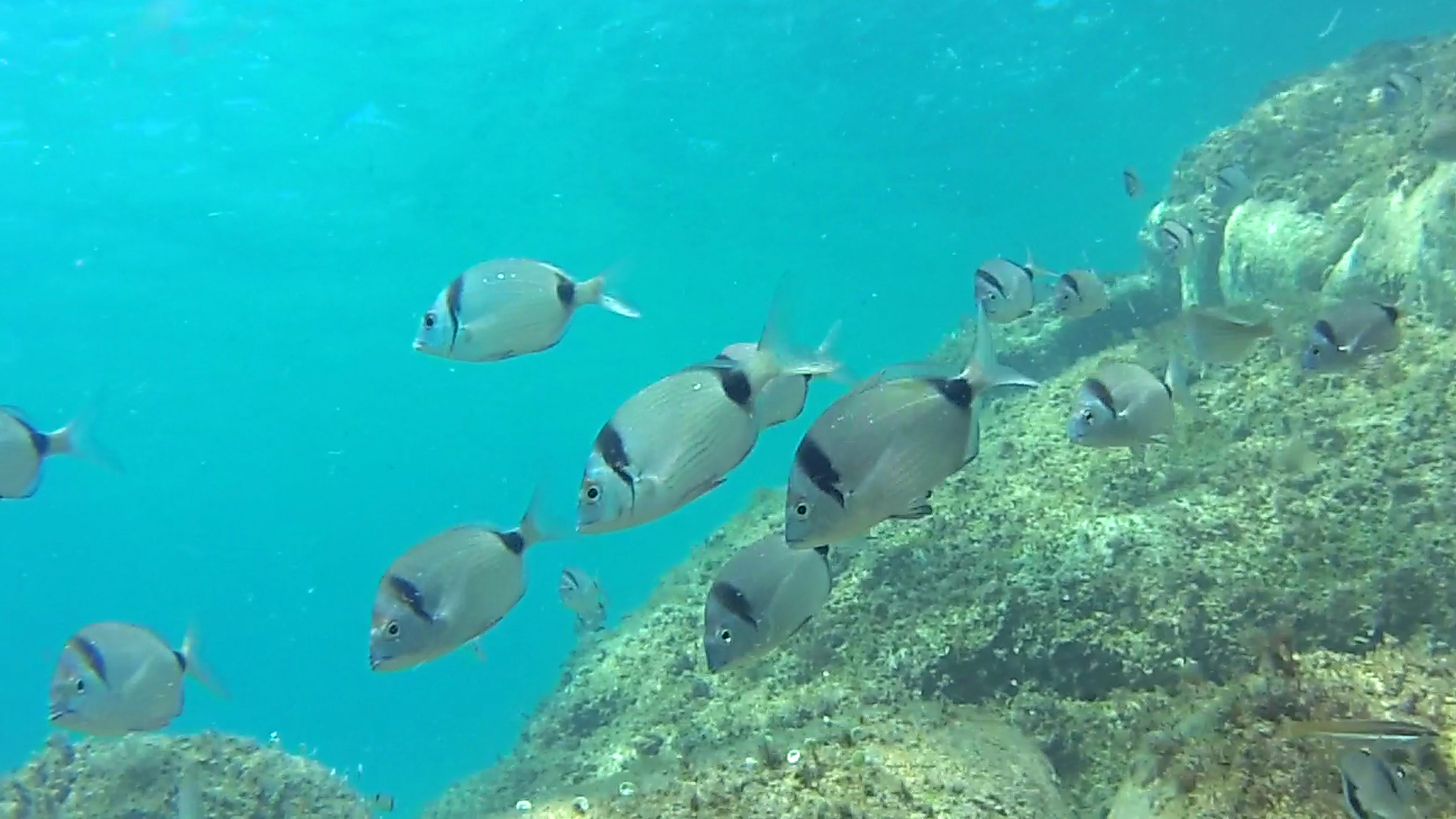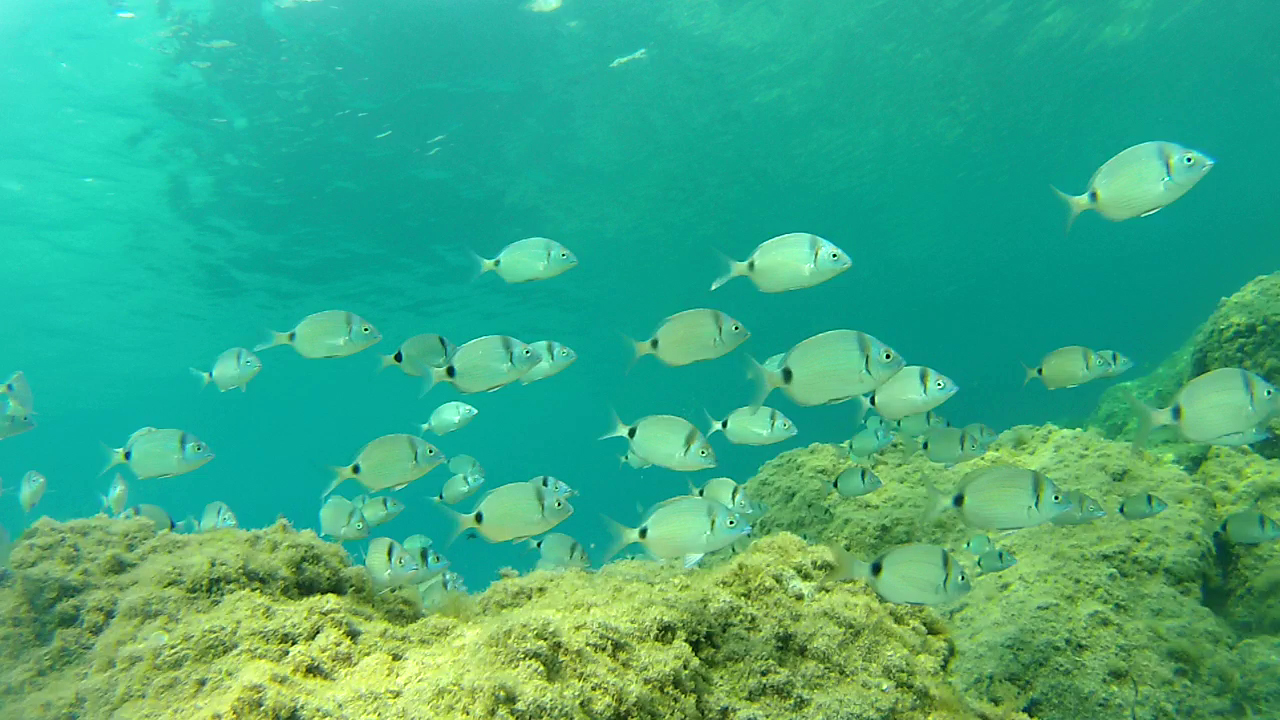Two-banded sea bream - Diplodus vulgaris
Diplodus vulgaris belongs to the class Osteichthyes, subclass Actinopterygii, order Peciformes, suborder Pecoidei, family Sparidae. Sarago fasciato testanera two-banded sea bream Diplodus vulgaris intotheblue.it

Oval-shaped, like all the sparidae, it generally has a size around 20-25 cm in adulthood. The mouth is very small. Predominantly carnivorous feeds on small crustaceans and worms.
It is easily distinguished from the other sparidae for the two dark spots in the shape of a saddle, one in the anterior part between the dorsal fin and the eye, the other in the caudal area, the back is gray mind the hips and the belly have a silvery color.
It is common throughout the Mediterranean Sea and the eastern Atlantic Ocean to Senegal. It prefers the shallows characterized by rocky areas where it easily finds shelter inside the burrows. It is a fish that loves social life and in fact we find it in herds both among its own similar and with other fish of different species.

The common two-banded sea bream (Diplodus vulgaris) is a species of seabream belonging to the family Sparidae.
Description
Diplodus vulgaris can reach a length of about 45 centimetres (18 in) with maximum recorded weight of 1.3 kilograms (2.9 lb). Body is generally grey-silver, with two well-defined vertical black bands, one close to the gills and one in the rear of the body, just before the base of the caudal fin. Another black stripe, less pronounced, is present near the eyes. There are golden lines along the body, typically on the back.
Lips are rather thick. In each jaw, there are 8 narrow, light-brownish incisors. In the western Mediterranean, it reproduces in October and November and in the eastern Mediterranean in December and January.
It is a gregarious species, sometimes forming groups composed even by many specimens. In the shallows, it often creates smaller groups even with other similar species.
Adults feed on benthic invertebrates, crustaceans, worms and mollusks. It is considered an important food fish.

Distribution and habitat
This species is widespread in the Mediterranean Sea, in the Black Sea and in the Eastern Atlantic Ocean, at depths of 0 to 160 m, more commonly between 0 and 30 m.
It inhabits rocky, sandy bottoms and seagrass beds. On sandy bottoms, it can be often found following species that dig the sand and trying to steal their food.
https://en.wikipedia.org/wiki/Diplodus_vulgaris

https://www.intotheblue.it/2019/10/21/diplodus/
https://www.intotheblue.it/2018/02/17/sarago-fasciato/
